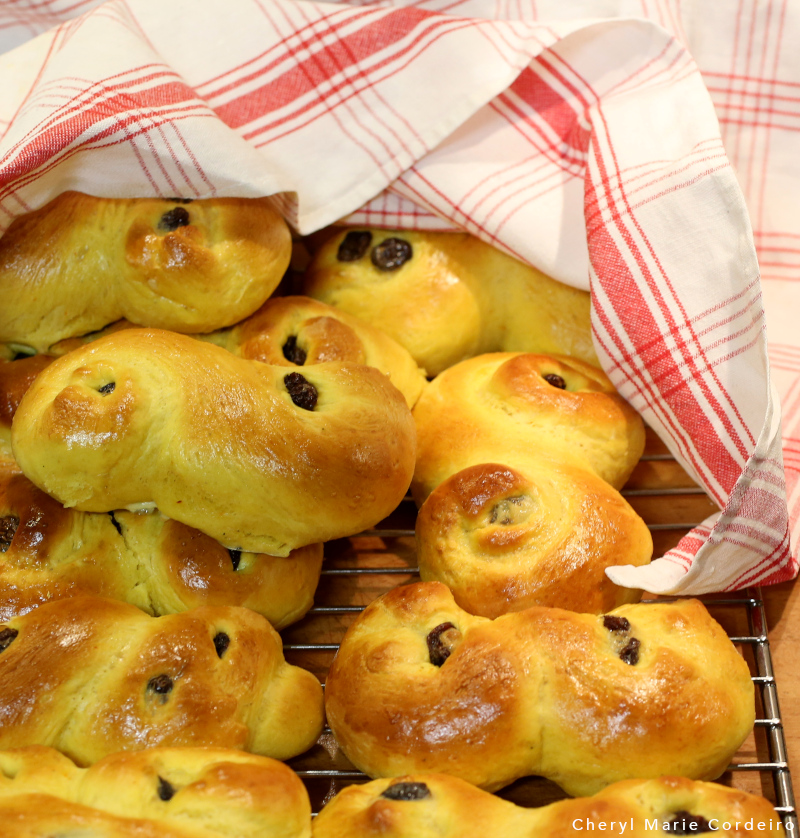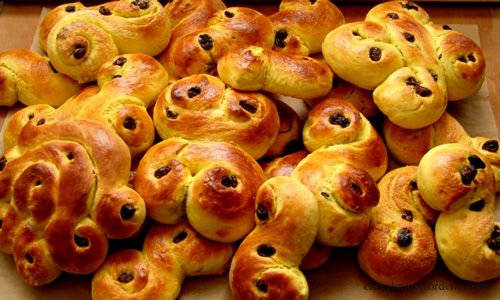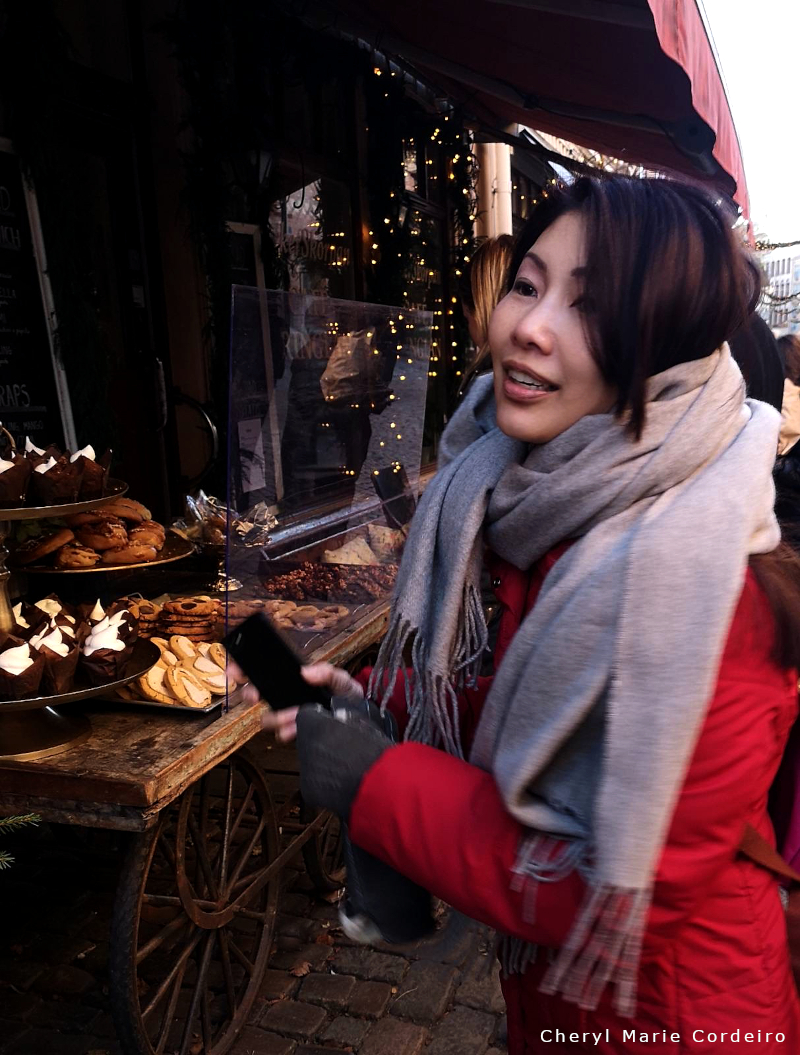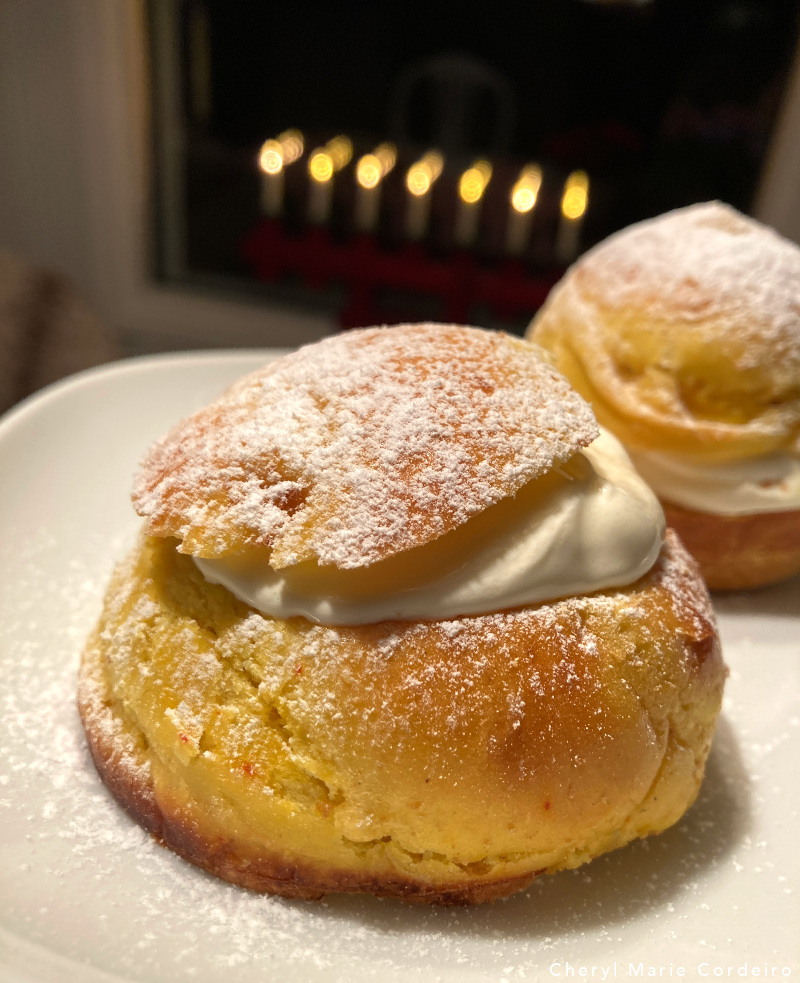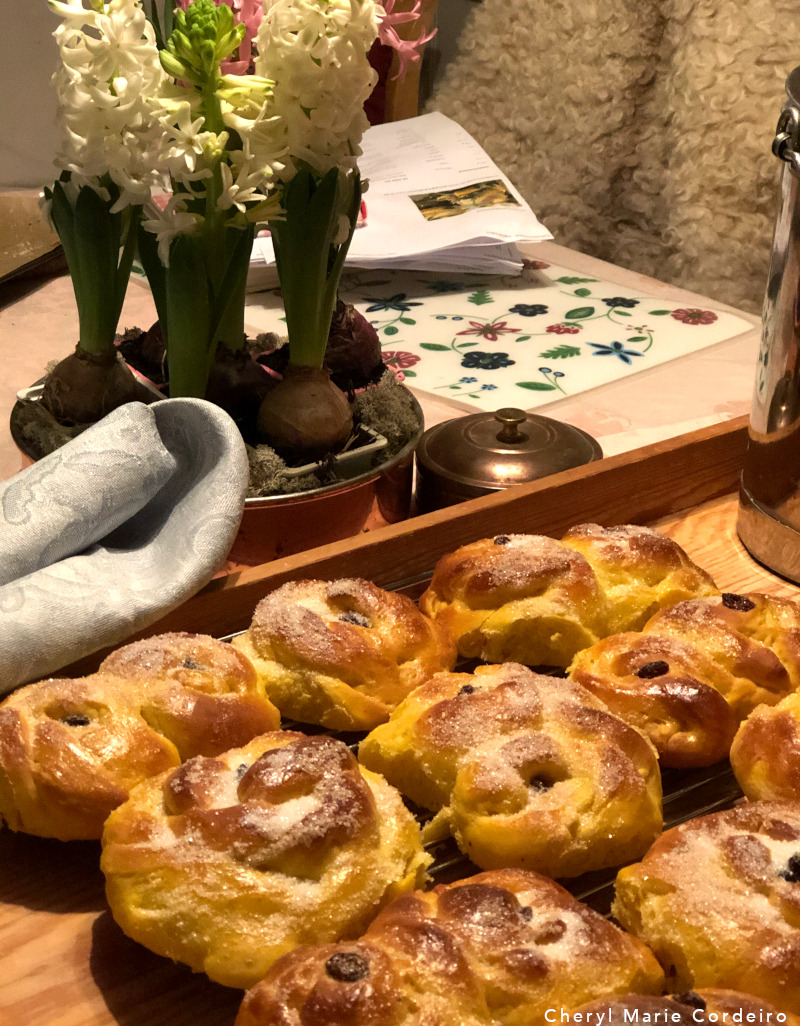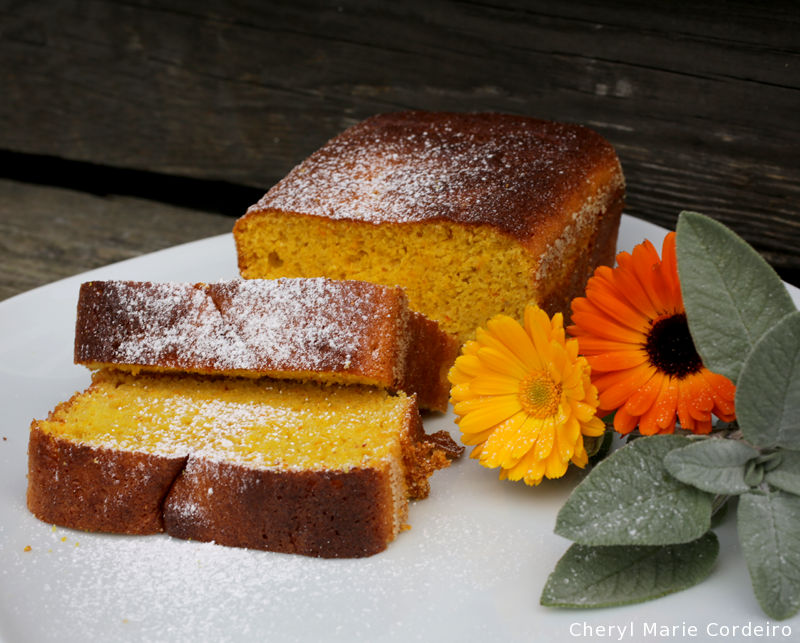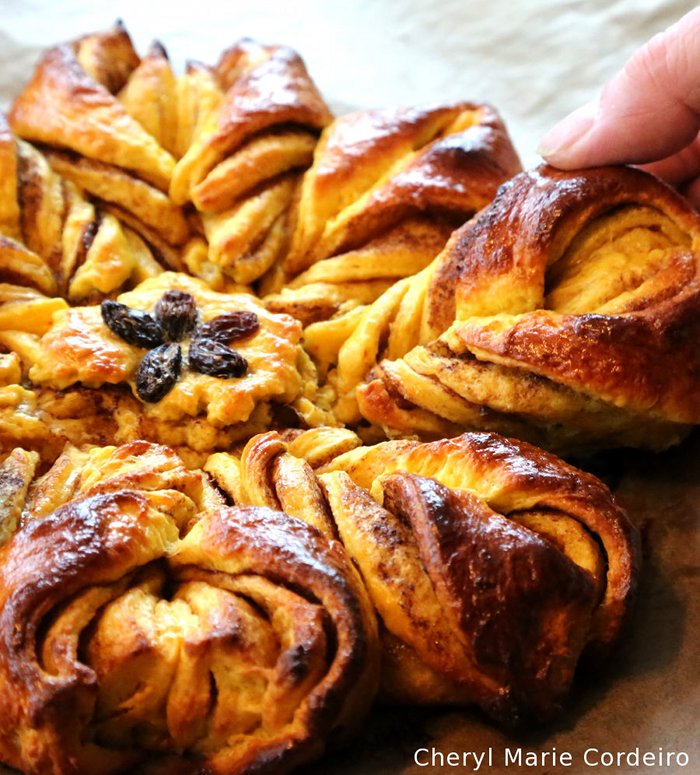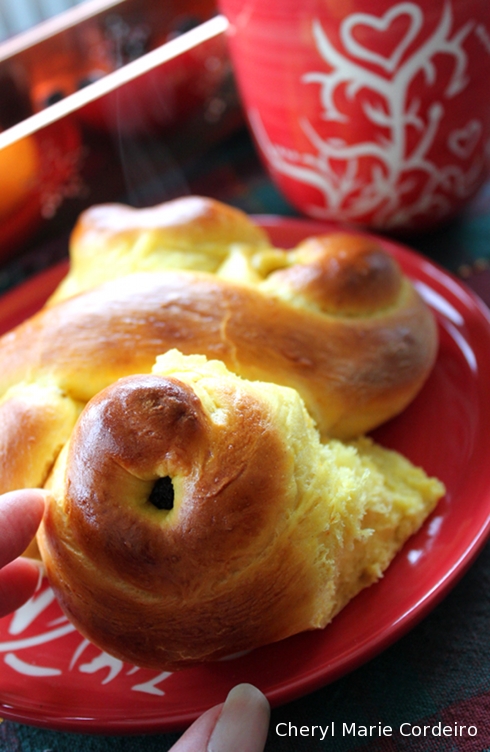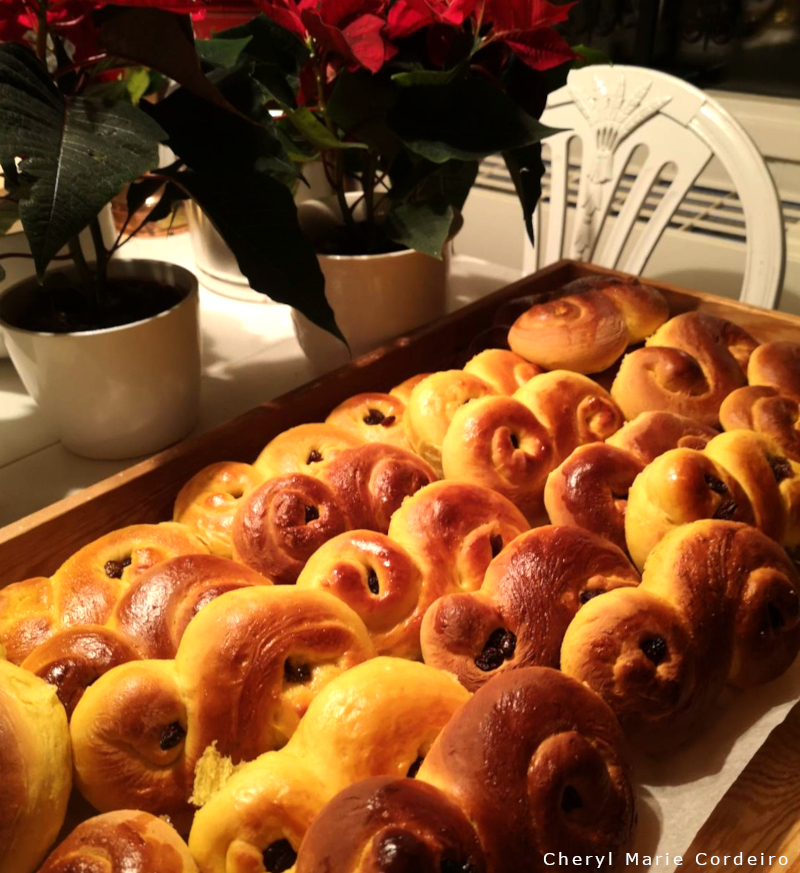
The weekend bake, lussekatter, revisiting our own a recipe from 2012 at Styrsö Sweden, 2022
Text & Photo © CM Cordeiro & JE Nilsson 2022
I saw the boundaries of festive periods, often indicated by the appearance of certain foods, dissolve when I recently walked into a grocery shop along the Swedish west coast, and found a luscious twin pack of semlor (a specific February treat), in mid-November. The appearance of a Shrove Tuesday food appearing just past All Saints took us by surprise, and it took us all of two seconds to grab that purchase. It seems the semla is the new Swedish preserved herring, soon to be eaten year round at all Swedish festivities, so we’ll roll with that.
